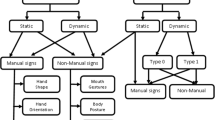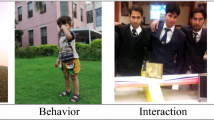Abstract
The performance of biometric modalities based on things done by the subject, like signature and text-based recognition, may be affected by the subject’s state. Fatigue is one of the conditions that can significantly affect the outcome of handwriting tasks. Recent research has already shown that physical fatigue produces measurable differences in some features extracted from common writing and drawing tasks. It is important to establish to which extent physical fatigue contributes to the intra-person variability observed in these biometric modalities and also to know whether the performance of recognition methods is affected by fatigue. In this paper, we assess the impact of fatigue on intra-user variability and on the performance of signature-based and text-based writer recognition approaches encompassing both identification and verification. Several signature and text recognition methods are considered and applied to samples gathered after different levels of induced fatigue, measured by metabolic and mechanical assessment and also by subjective perception. The recognition methods are dynamic time warping and multi-section vector quantization, for signatures, and allographic text-dependent recognition for text in capital letters. For each fatigue level, the identification and verification performance of these methods is measured. Signature shows no statistically significant intra-user impact, but text does. On the other hand, performance of signature-based recognition approaches is negatively impacted by fatigue, whereas the impact is not noticeable in text-based recognition, provided long enough sequences are considered.















Similar content being viewed by others
References
Lopez-de-Ipina K, et al. Automatic analysis of Archimedes’ spiral for characterization of genetic essential tremor based on Shannon’s entropy and fractal dimension. Entropy. 2018;20(7):1–15. https://doi.org/10.3390/e20070531.
López-de-Ipiña K, et al. Selection of entropy based features for automatic analysis of essential tremor. Entropy. 2016;18(5):184. https://doi.org/10.3390/e18050184.
Lopez-de-Ipiña K, et al. Automatic non-linear analysis of non-invasive writing signals applied to essential tremor. J Appl Log. 2016;16:50–9. https://doi.org/10.1016/j.jal.2015.02.003.
Fiz JA, et al. Short term oxygen therapy effects in hypoxemic patients measured by drawing analysis. Comput Methods Programs Biomed. 2015;118(3):330–6. https://doi.org/10.1016/j.cmpb.2015.01.005.
Asıcıoglu F, Turan N. Handwriting changes under the effect of alcohol. Forensic Sci Int. 2003;132(3):201–10. https://doi.org/10.1016/S0379-0738(03)00020-3.
Phillips JG, Ogeil RP, Müller F. Alcohol consumption and handwriting: a kinematic analysis. Hum Mov Sci. 2009;28(5):619–32. https://doi.org/10.1016/j.humov.2009.01.006.
Foley RG, Lamar MA. The effects of marijuana and alcohol usage on handwriting. Forensic Sci Int. 1979;14(3):159–64. https://doi.org/10.1016/0379-0738(79)90134-8.
Tucha O, Walitza S, Mecklinger L, Stasik D, Sontag T-A, Lange KW. The effect of caffeine on handwriting movements in skilled writers. Hum Mov Sci. 2006;25(4–5):523–35. https://doi.org/10.1016/j.humov.2006.06.001.
Harralson HH, Miller LS. Huber and headrick’s handwriting identification. CRC Press; 2017.
Roulston MG. The fatigue factor: an essay dealing with the effects of physical fatigue on handwriting habits. Vancouver BC Canada; 1959.
Remillard JLG. Abnormal cardiac rhythm and handwriting. J Can Soc Forensic Sci. 1971;4(4):145–53. https://doi.org/10.1080/00085030.1971.10757286.
Harralson HH, Teulings HL, Farley BG. Handwriting variability in movement disorder patients and effects of fatigue. InProceedings of the fourteenth biennial conference of the International Graphonomics Society 2009 (pp. 103–107).
Deller JR, Proakis JG, Hansen JHL. Dynamic time warping in Discrete-time processing of speech signals. New York: Macmillan Publishing Co; 1993.
Faundez-Zanuy M. On-line signature recognition based on VQ-DTW. Pattern Recognit. 2007;40(3):981–92. https://doi.org/10.1016/j.patcog.2006.06.007.
Burton DK, Shore JE, Buck JT. Generalization of isolated word recognition using vector quantization., InICASSP IEEE International Conference on Acoustics Speech and Signal Processing - Proceedings 1983. https://doi.org/10.1109/icassp.1983.1171915.
Buck J, Burton D, Shore J. Text-dependent speaker recognition using vector quantization. InICASSP'85 IEEE International Conference on Acoustics Speech and Signal Processing 1985 (Vol. 10, pp. 391–394). IEEE. https://doi.org/10.1109/icassp.1985.1168413.
Faundez-Zanuy M, Pascual-Gaspar JM. Efficient on-line signature recognition based on multi-section vector quantization. Pattern Anal Appl. 2011;14(1):37–45.
Pascual-Gaspar JM, Faundez-Zanuy M, Vivaracho C. Fast on-line signature recognition based on VQ with time modeling. Eng Appl Artif Intell. 2010;24(2):368–77.
Gersho A, Gray RM. Vector quantization and signal compression. The Springer International Series in Engineering and Computer Science; 1991.
Srihari SN, Cha SH, Arora H, Lee S. Individuality of handwriting. J Forensic Sci. 2002;47(4):856–72.
Bouletreau V, Vincent N, Sabourin R, Emptoz H. Handwriting and signature: one or two personality identifiers?. InProceedings of the Fourteenth International Conference on Pattern Recognition 1998 (vol. 2, pp. 1758–1760).
Sesa-Nogueras E, Faundez-Zanuy M. Biometric recognition using online uppercase handwritten text. Pattern Recognit. 2012;45(1):128–44.
Sesa-Nogueras E, Faundez-Zanuy M, Roure-Alcobé J. Gender classification by means of online uppercase handwriting: a text-dependent allographic approach. Cognit Comput. 2016;8(1):15–29. https://doi.org/10.1007/s12559-015-9332-1.
Kohonen T. The self-organizing map. Proc IEEE. 1990;78(9):1464–80.
Fierrez-Aguilar J, et al. BiosecurID: a multimodal biometric database. Pattern Anal Appl. 2010;13(2):235–46. https://doi.org/10.1007/s10044-009-0151-4.
Garnacho-Castaño M-V, Faundez-Zanuy M, Lopez-Xarbau J. On the handwriting tasks’ analysis to detect fatigue. Appl Sci. 2020;10(21):7630. https://doi.org/10.3390/APP10217630.
Garnacho-Castaño MV, Domínguez R, Ruiz-Solano P, Maté-Muñoz JL. Acute physiological and mechanical responses during resistance exercise at the lactate threshold intensity. J Strength Cond Res. 2015;29(10):2867–73. https://doi.org/10.1519/JSC.0000000000000956.
Garnacho-Castaño MV, et al. Oxygen uptake slow component and the efficiency of resistance exercises. J Strength Cond Res. 2021;35(4):1014–22. https://doi.org/10.1519/JSC.0000000000002905.
Borg G. Perceived exertion as an indicator of somatic stress. Scand J Rehabil Med. 1970;2(2):92–8.
Funding
This work was supported by a Spanish grant PID2020-113242RB-I00.
Author information
Authors and Affiliations
Corresponding author
Ethics declarations
The authors declare that they have no conflict of interest. All procedures performed in studies involving human participants were in accordance with the ethical standards of the institutional and/or national research committee and with the 1964 Helsinki declaration and its later amendments or comparable ethical standards. For this type of study formal consent is not required. This chapter does not contain any studies with animals performed by any of the authors. Informed consent was obtained from all individual participants included in the study.
Additional information
Publisher's Note
Springer Nature remains neutral with regard to jurisdictional claims in published maps and institutional affiliations.
Rights and permissions
About this article
Cite this article
Sesa-Nogueras, E., Faundez-Zanuy, M. & Garnacho-Castaño, MV. The Effect of Fatigue on the Performance of Online Writer Recognition. Cogn Comput 13, 1374–1388 (2021). https://doi.org/10.1007/s12559-021-09943-5
Received:
Accepted:
Published:
Issue Date:
DOI: https://doi.org/10.1007/s12559-021-09943-5




